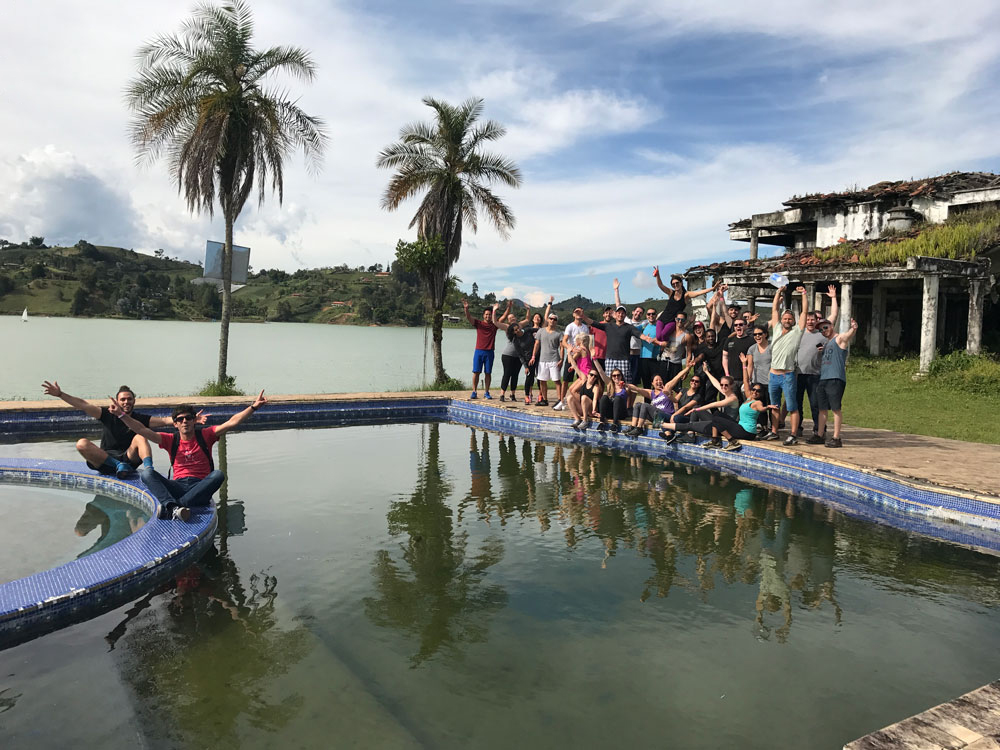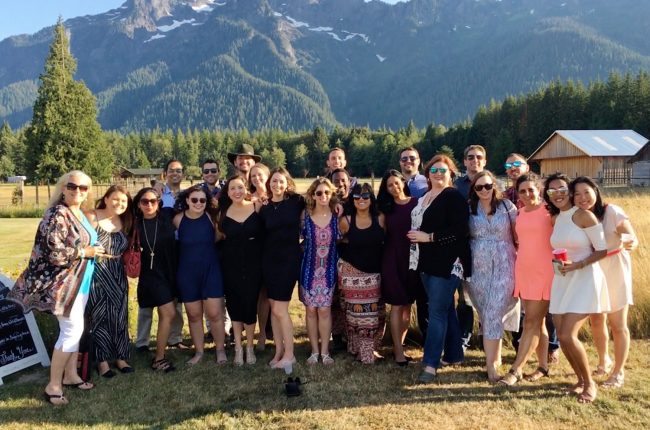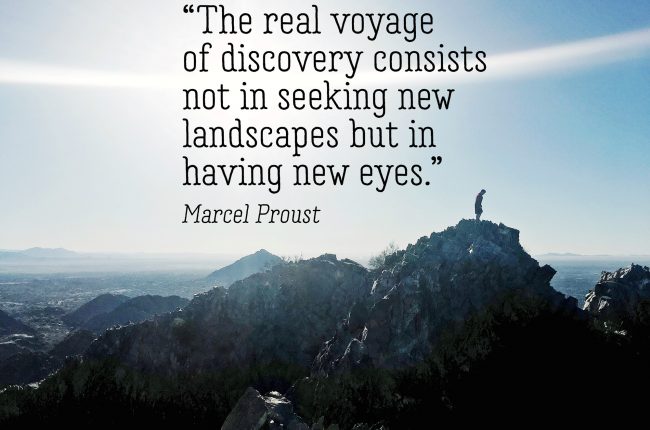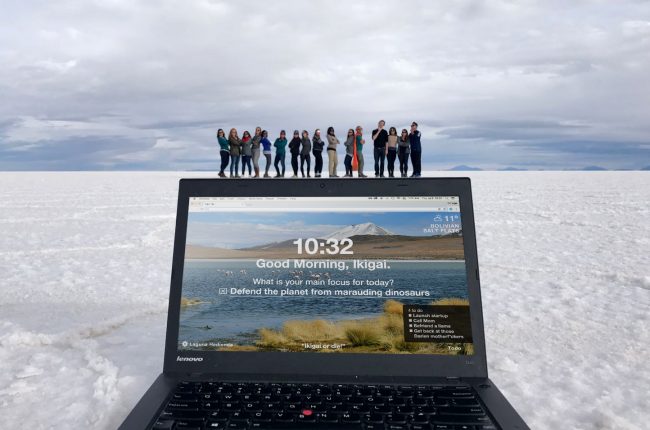
I’m feeling a little conflicted about how much fun I had yesterday. It was our first full day in Medellin, Colombia, and to celebrate Kara’s birthday, 31 of us headed out to the picturesque Lake Guatapé:

We weren’t headed out there just for the vistas, though. Our destination was La Manuela, one of Pablo Escobar’s 500+ properties, and our mission was to team up against each other for the most epic game of paintball you can imagine.
Getting Educated about Escobar
Before I came to Colombia, I honestly knew very little about the country and its most infamous drug lord. Over the past few weeks, though, I’ve been catching up on history (and episodes of Narcos), and what I’m learning makes my stomach turn. At the height of his reign, Pablo Escobar’s Medellin Cartel was bringing in more than $60million a day (yes, EACH DAY), and it is estimated that the cartel smuggled 80% of the cocaine that crossed into the U.S. borders. Escobar claimed he would one day be president of Colombia, and he fueled his political ambitions by promoting himself as a Robin Hood figure, funding programs benefiting hospitals and schools, building local soccer fields and an entire neighborhood of housing for the poor. He even responded to individual requests for help from people needing money for medical attention and education.
But make no mistake, Escobar was a terrorist. In addition to funding hospitals, he also financed guerrilla armies to protect his cocaine trade. He was responsible for the killing of more than 4,000 people. His bloody trail includes the murder of politicians, rival drug lords, police, members of the Colombian military, prison guards and thousands of innocent civilians. On a mass scale, he directed the bombing of a domestic Avianca flight, shopping centers and government buildings. On an individual scale, his properties were built to include horrific amenities such as torture chambers complete with jacuzzi-sized tubs where he could deal with the remains of his tortured victims. The entire country lived in fear of Escobar and his ruthless cartel.
And yet, 23 years after his death, here we were, goofing around on the property he used as his holiday home. To get there, we took an hour-and-45-minute scenic bus ride through the glorious Colombian countryside, paused for a view of Guatapé Lake before piling into (and onto) 4×4 Jeeps that took us to the property.

Before we suited up for paintball, our guide took us on a brief tour of the grounds. The setting is absolutely beautiful: emerald hills dotted with palm trees and flowers surrounding an absolutely lovely, calm lake. It was picturesque and peaceful. But the buildings themselves revealed the harrowing past at the core of the property. In 1993, a few months before Escobar was killed in Medellin, La Manuela was bombed by a vigilante group called Los Pepes, whose name stood for “People Persecuted by Pablo Escobar.”


As we stood in the shade of the poolside cabana, listening to our guide tell the history of Escobar and La Manuela, I was struck by a brief comment he said about how Escobar could be compared to tyrants like Hitler. “It’s really easy to celebrate Pablo the same way we celebrate people like Scarface. But he was truly evil. My parents lived in terror during those years, afraid to even go to work for fear they could be killed at any time. When we would play outside with other kids, we would hear gunshots and our mothers would call us back inside saying, ‘Pablo is shooting!'”
That’s when I realized how truly ignorant I’d been, and that’s when I started to feel a little weird about what we were doing there. While searching for more information about La Manuela later, I came across another blogger’s account:
While I stood looking over the cracked, slime filled pool, one story that came to mind was that of a lavish party Pablo threw in one of his picturesque properties. The guests were all high ranking players in the drug world, corrupt politicians and other powerful leaders. While they mingled around the pool, the sun shone and live music played. Suddenly the music stopped and Pablo appeared dragging a bound and gagged worker from one of his farms. “This man stole $10 of coca from me” he said. Then he pushed the helpless man into the pool. Everybody watched as he struggled to save himself. “Let this be a warning to you all”. A short silence was followed by the music starting up and the party continuing, the farmer now floating dead in the pool. Could it have been this very pool where that story played out?

From Deadly Acts to a Little Role Playing
The creepy feeling continued as we loaded our paintball guns, strapped on some masks and spread out across the property in a eerily realistic game of cops and robbers, except it was more like DEAs and Narcos. Following a couple games of Capture the Flag, our two teams were appointed either the Medellin Cartel or the rival Cali Cartel, assigning one Medellin player the role of Pablo Escobar. The goal of the game was for the Cali Cartel to “kill” Escobar. I was part of the team tasked to protect Pablo. We took a moment to pose, guns in the air, for a photo surrounding Gianni as our Escobar and then dispersed throughout the grounds and the bombed out shell of the house to brace ourselves against the attack from the Cali Cartel. We won. Thinking back to our guide’s comparison of Escobar to Hitler, I wasn’t sure if I should celebrate. What would the reaction be if I told people that I had played paintball in Hitler’s vacation home, taking turns playing the role of Nazis shooting at Allies? How would I feel if I were to role-play a game where I would be tasked to protect the führer?
Is it ok to turn a tyrant’s horror into a tourist’s pleasure game?
Oh, but I’ll admit it: what fun we had. It was absolutely one of my most favorite days on Remote Year so far. There were picture-perfect vistas of nature, the adventure of a bumpy 4×4 ride, pulse-quickening competition between friends, a birthday celebration, dinner with a view over the lake, and a relaxing boat ride to conclude our visit to Guatapé. We came away with battle scars from the paintball pellets, funny stories (like how Devin was so afraid of getting his white sneakers muddy that he tied plastic grocery bags around his feet), and a bevy of Instagram-worthy photos. But most importantly, we gained a first-hand glimpse into one very graphic consequence of the destruction wrecked across Colombia during the country’s turbulent recent past.
It still gives me the heebie-jeebies to think about what those grounds witnessed and who walked the same steps that I traversed as I laughed and joked with my friends. But it does give me hope to consider the contrast of yesterday’s fun and games compared with the original terror that once permeated the property. It is a promising indication of Columbia’s evolution toward peace, and in the end, I have come to my own peace with my internal conflict about our outing. If nothing else, the day sparked my further interest in learning more so I can better understand this country and her history.
Also published on Medium.



